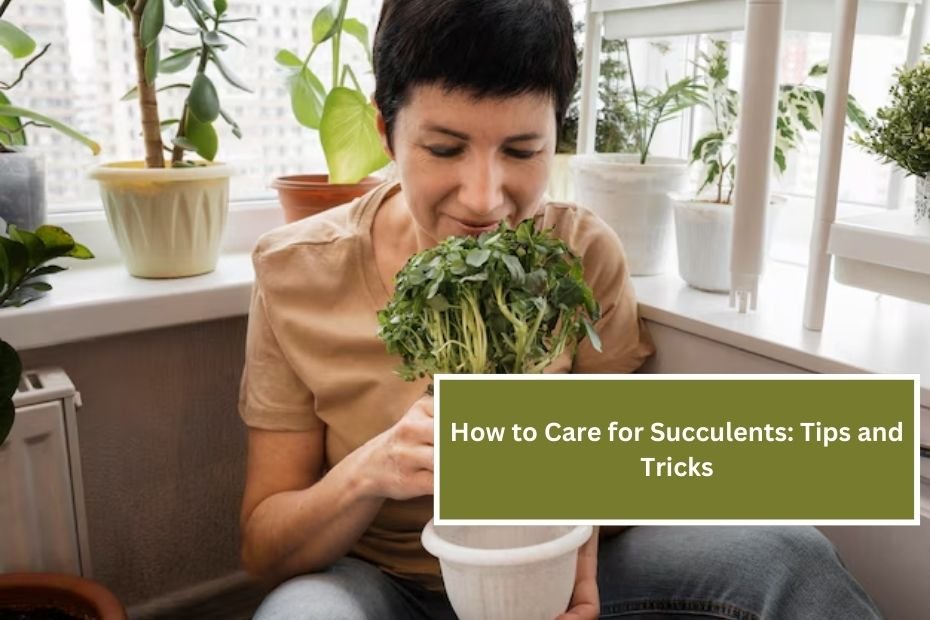Succulents are popular houseplants known for their unique shapes, vibrant colors, and ability to thrive in various conditions. These drought-resistant plants are relatively low-maintenance, making them ideal for both novice and experienced gardeners. However, they do have specific care requirements that are essential for their health and growth. In this article, we will explore the best tips and tricks to care for succulents, ensuring they flourish in your home.
Understanding Succulents
Before diving into care tips, it’s important to understand what succulents are. Succulents are plants that store water in their leaves, stems, or roots, allowing them to survive in arid environments. They come in many varieties, including aloe vera, jade plant, and echeveria, each with unique characteristics.
1. Choosing the Right Pot
The first step in caring for succulents is selecting the right pot. When choosing a pot, consider the following factors:
- Drainage: Succulents require well-draining soil to prevent root rot. Ensure your pot has drainage holes at the bottom to allow excess water to escape.
- Size: Select a pot that is slightly larger than the succulent’s root ball. If the pot is too large, the soil may retain too much moisture, leading to root issues.
- Material: Terracotta pots are a great option for succulents because they are porous and allow for better airflow and drainage.
2. Soil Selection
Choosing the right soil mix is crucial for succulent health. Regular potting soil retains too much moisture, which can harm succulents. Instead, use a well-draining cactus or succulent mix. You can also create your own mix by combining regular potting soil with coarse sand or perlite to enhance drainage.
3. Watering Techniques
One of the most common mistakes in succulent care is overwatering. Here are some tips on how to water your succulents properly:
- Check the Soil: Before watering, stick your finger about an inch into the soil. If it feels dry, it’s time to water. If it’s still moist, wait a few more days.
- Deep Watering: When you do water, ensure you water deeply, allowing the water to reach the roots. Water until it drains out of the bottom of the pot, then discard any excess water.
- Frequency: The frequency of watering depends on factors like climate, season, and the size of the pot. Generally, succulents should be watered every two to three weeks during the growing season (spring and summer) and less frequently in the dormant season (fall and winter).
4. Light Requirements
Succulents thrive in bright, indirect sunlight. Here’s how to provide the right lighting:
- Location: Place your succulents near a south or west-facing window where they can receive plenty of sunlight. If you notice them stretching or leaning toward the light, they may need more exposure.
- Avoid Direct Sun: While succulents love light, too much direct sunlight can scorch their leaves. If you notice browning or crispy edges, move them to a spot with filtered light.
5. Temperature and Humidity
Succulents prefer warm temperatures and low humidity. Keep them in an environment that mimics their natural habitat:
- Ideal Temperature: Most succulents thrive in temperatures between 60°F to 80°F (15°C to 27°C). Protect them from cold drafts or extreme temperature changes.
- Humidity Levels: Succulents prefer low humidity levels. Avoid placing them in areas with high humidity, such as bathrooms or near kitchens.
6. Fertilizing Succulents
While succulents don’t require much fertilization, a little can help them grow better. Here’s how to fertilize your succulents effectively:
- Type of Fertilizer: Use a diluted, balanced liquid fertilizer specifically designed for succulents or cacti. Look for one with a lower nitrogen content, such as a 2-7-7 or 5-10-10 ratio.
- Frequency: Fertilize during the growing season (spring and summer) once a month. Do not fertilize during the fall and winter when the plant is dormant.
7. Repotting Succulents
Over time, your succulent may outgrow its pot or the soil may become depleted. Repotting is essential to ensure your plant continues to thrive:
- When to Repot: Look for signs that your succulent needs repotting, such as roots growing out of the drainage holes or the plant becoming top-heavy.
- How to Repot: Choose a pot that is only slightly larger than the current one. Gently remove the succulent from its pot, shake off excess soil, and place it in the new pot with fresh soil. Water lightly after repotting.
8. Pest Control
Although succulents are generally resistant to pests, they can still be affected. Here are some common pests to watch out for:
- Mealybugs: These white, cottony bugs can infest your succulent. Remove them with a cotton swab dipped in rubbing alcohol.
- Aphids: Small, green insects that can be controlled with a strong spray of water or insecticidal soap.
- Fungus Gnats: If you notice tiny flies around your succulent, they may be fungus gnats. Allow the soil to dry out more between waterings to eliminate their breeding ground.
9. Common Problems and Solutions
Even with proper care, succulents can face some common issues. Here are some problems and how to solve them:
- Leggy Growth: If your succulent is stretching and becoming leggy, it’s likely not getting enough light. Move it to a brighter location.
- Overwatering: If you notice yellowing leaves or mushy stems, it’s a sign of overwatering. Allow the soil to dry out completely and reduce your watering frequency.
- Underwatering: Conversely, if the leaves are shriveling, your succulent may be underwatered. Increase your watering frequency but ensure you’re not overwatering.
10. Seasonal Care
Succulents may require different care throughout the seasons. Here’s how to adjust your care routine:
- Spring and Summer: This is the growing season for succulents. Water and fertilize regularly, and ensure they receive plenty of light.
- Fall and Winter: During the dormant season, reduce watering to every 3-4 weeks. Provide less fertilizer, and keep them in a stable temperature environment.
Conclusion
Caring for succulents can be a rewarding experience, offering beauty and vibrancy to your home. By following these tips and tricks, you can ensure that your succulents thrive and bring joy for years to come. Remember, the key to successful succulent care lies in understanding their needs, including proper watering, light, and soil requirements. With a little attention and love, your succulents will flourish and become a stunning addition to your indoor garden. Enjoy the journey of growing these resilient plants and the beauty they bring to your life!

